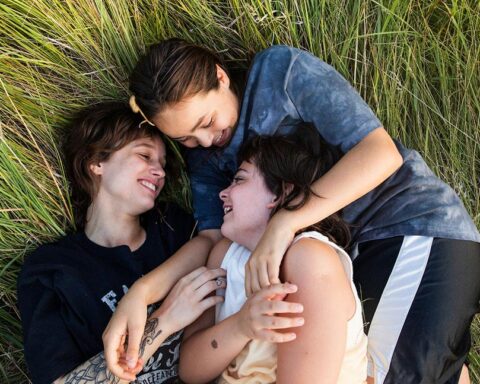Munch (2023)
A Biography of Expression
In the opening film of the the International Rotterdam Film Festival, Norwegian auteur Henrik Martin Dahlsbakken presents an elaborate portrait of his compatriot Munch, the pioneer of expressionism.
It would be appropriate to start with the director’s pre-screening introduction before we move on to the review: “Before shooting the film, we did a comprehensive research on Munch, I can easily say that we went down to the manuscript diaries and letters. As a result of our studies, we believe that there are 4 periods to reflect the artist’s life best: 20s, 30s, 45s and his final years (80), so we’ve decided to focus on those. The biography you’re about to watch is more than classic (and yet) experimental.”
“Sickness, madness, and death,” says Munch, “were dark angels who guarded my cradle and accompanied me throughout my life.” As if to prove this, the director focuses his camera closing up on a butterfly on one side of the window glass and on a crow on the other. Life may not be short for Munch, death will be too close for comfort.
Munch lost his mother at the age of 5 and his sister at the age of 14. His father’s death will not be too late either. Terminal and mental illnesses, name it a fate that Munch cannot escape, just like his family. This is followed by the authoritarian patriarch in the family, the abusive environment of friends and the art community and ruthless art lovers who later reject him by means of (in fact) ‘not understanding’; Art and life will not be easy for Munch.
We meet a naive and relatively hopeful Munch in his 20s, but that hope will only last until his first love turns his life upside down.
In his 30s, he falls into the middle of the bohemian artist life in Berlin, this is also where he will be rejected by the art community. Being one of the pioneers of the expressionist movement, it seems that he has to carry the whole burden is on his shoulders: his extreme mood that he is stuck in could only be reflected with the artworks that he made by using an art technique beyond his time! However, this is not a customary and more importantly a well-understood technique for its time; (because the criteria for success are still in Rembrandt and the classics). He is much more compressed by the black walls surrounding his soul…
This is followed by the Copenhagen years in a mental clinic that he was closed in his 40s. The feeling of isolation and confinement is now at its peak: the director reflects this very successfully by the preference of the black and white color and a narrower frame.
In the last period of his life, we see a Munch is still grumpy but filled with a bit of joy to live. Maybe his life will end in his loneliness, maybe the state of not being understood pushed him away.
If we look at the technical features of the film after this broad summary, it would be very appropriate to claim that the film succeeds to reflect the expressionism well. The close-up shots that express the emotional world and using a handy-cam draw the audience into Munch’s psychology rather than the flow of the his regular life. Munch’s preference to spend his time in nature rather than with people and also how well he integrates with nature while painting nude with his knight in the bushes is reflected very successfully. The fact that the director prefers low angle shooting while Munch is painting shows that he has this ‘divine’ power probably only in these happy moments. This state of being integrated with nature that well in his younger ages will later be replaced by the ‘The Scream of Nature’, his famous painting Skrik, for the reasons mentioned above.
If we come back to the ‘experimental’ features that the director referenced before the screening; After all, the biography of an expressionist painter is not expected to have classical features. In addition, the distortions that he preferred throughout the film were often in place; time jumps make the audience’s head spin, and the camera movements drag the audience after Munch as it jumps between timeline. The narrative is not linear, supposedly, the director travels through Munch’s eras. However, considering that some transitions are too sudden, it would not be wrong to say that it causes Verfremdungseffekt on the audience. Just like Munch used a cell phone in the late 1800s and went to a techno club in Berlin to have fun; the small touches of the director’s fantasy world, could those be causing the integrity of the film to break? As well, the fact that 4 different actors from 4 different periods are physically so different from each other that it distracts the attention of the audience, which was one of the weak parts of the film.
As a result, with his bold and experimental approach, Dahlsbakken manages well to deliver an IFFR-worthy opening film with Munch.
Where did I see it: International Rotterdam Film Festival (Premiere)
Nil Birinci







